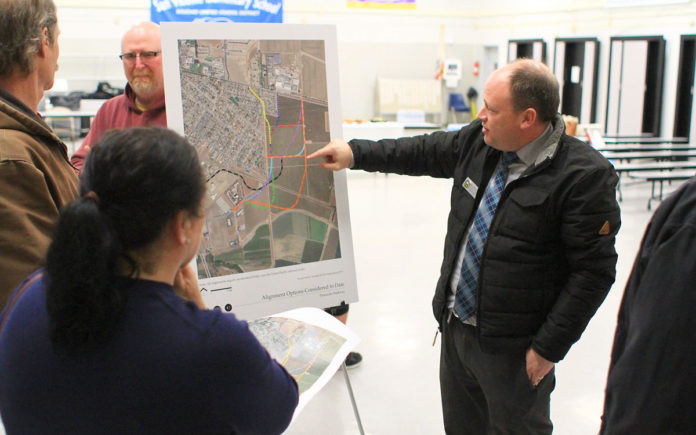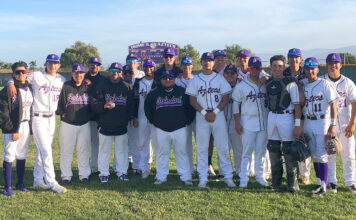SOLEDAD — City of Soledad hosted a community planning meeting Jan. 30 to begin the process of collecting feedback on the proposed Pinnacles Parkway Project, which is aimed at creating a street to connect Metz and Los Coches roads.
Doing so would provide a way for people on the east side of town to get to the existing and future shopping centers on the south side, without having to go northwest through the heart of town and then south again.
The city is considering multiple possible paths for the road to take as well as multiple factors, such as how the road would divide farmland and cause farmers to change the way they manage their crops. Irrigation canals also prevent a road design from going alongside the current edge of the city.
Current plans are for a two-lane road with expected requirements for bike lanes and pedestrian sidewalks. No matter the design, there will be a need for a bridge, which will likely impact the area around it.
“The biggest reason we’re trying to get input is this bridge and the effect on the neighborhood,” said Community and Economic Development Director Brent Slama. “We can’t build at grade, so we have to build a bridge. There’s been too many train-car collisions and they won’t allow us to do that.”
Slama said an underpass is not an option because of canals and the impossibility of diverting the railroad during construction.
The bridge would need to stand 30 feet tall, which would require building hills to ramp up the needed elevation, but with inclines gentle enough to meet Americans with Disabilities Act requirements.
“The bridge would have to be as high as the highway overpass,” Slama said. With that height, he said it would be visible everyday by residents if built next to a neighborhood.
Moving the bridge toward the southeast puts it at a 90-degree angle over the railroad, which is less costly to build and solves the problem of sight issues for the nearby neighborhoods. But, it comes with an increased length of pavement and puts the road further away from current neighborhoods.
While the pavement means more development costs, the angle of the bridge can mean the difference between a $4 million bridge and an $8 million bridge, according to Slama.
Some path options allow the road to connect to Palm Avenue and others to Tiburon Place, which would allow neighborhood access directly to the roadway.
The road’s placement will also affect the future growth of the city in the area. Despite most of Soledad’s growth being on the north and west sides, there is some room for growth on the southeast, all determined by the potential road.
“We have an agreement with the county that says, anything that goes on this (west) side would be developed, anything that goes on this (east) side would be permanently ag forever,” Slama said.
Having an eye toward the future also means the choice of where to make an intersection with Metz Road carries significance.
“Right now there’s not a whole lot of traffic on Orchard, but as that grows over time, we’re going to put a traffic light there,” Slama said.
Though the plans for the parkway are a small two-lane road, Slama explained that having it capable of supporting trucks would take further planning, but that the city would prefer to have trucks use that route to get around the city rather than going through it when needed.
The money for the roadway will come from the sales tax issued by the Transportation Agency for Monterey County.
“This is our first public meeting we’ve had, and this is why we’re here,” said Slama, pointing at a map with a rainbow of different path options having their own colors. “It’s all about tradeoffs. That’s why we’re starting the conversation with the community. What’s most important with the community?”
He said the overall timeline for the road will take at least three to four years, but that the city government will likely make a choice within months.
“We’re probably six months out from the next serious discussion point when the council has to pick one of these,” Slama said.
Residents can leave input on comment cards, by contacting Slama at city hall, through the city’s social media or by going to the community meetings.
“If you leave your information, then we know we can contact you when the next meeting comes up,” Slama said.
There are plans for a series of community input sessions, with at least three or four more public meetings before the eventual city council decision.











